As the title describes the goal of this project was to explore the effect of various concrete mixtures on structural capabilities through a lunar dome design.
The project’s geometric inputs for the dome are it’s radius, height, wall thickness at the top and wall thickness at the base.
The material inputs are a collection of 1000+ concrete recipes, with varying mixture ratios, and their corresponding compressive strength, that was put together by Meng Heng Ea at RMIT in 2019.
The project’s intended output is the media n utilization, which tells us (how much of the material mass is being utilized for structural load).
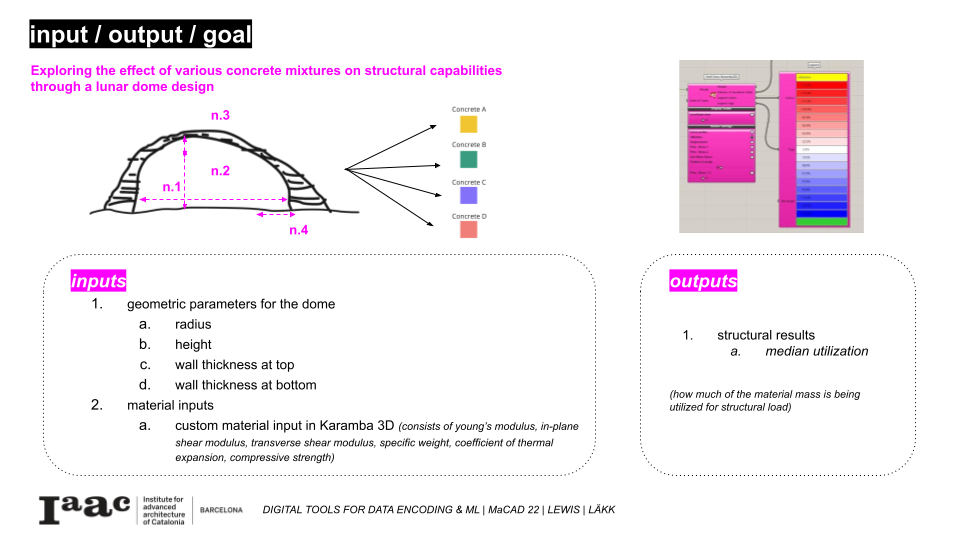
The utilization data output was extracted from Grasshopper plugin Karamba 3d based on the material properties and geometry inputs, and under the specific load cases relevant for the moon environment.
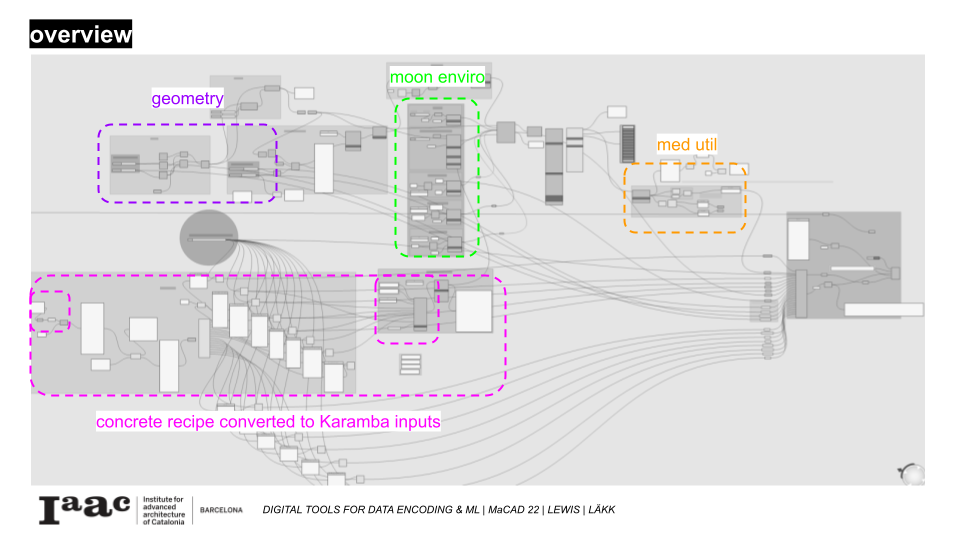
For that we calculated the necessary material properties of 1030 recipes of concrete mixture needed as Karamba input. In order to reduce the amount of output data we selected 65 concrete mixtures with highest, medium and lowest compressive strength and ran them through Karamba together with the min, med and max values for geometry input. Based on that we extracted 16000 datapoints.

The conditions for the lunar environment were defined by the 1/6th of the gravity, dome’s internal pressure of 101.4kPa and maximum temperature of 120 celsius.
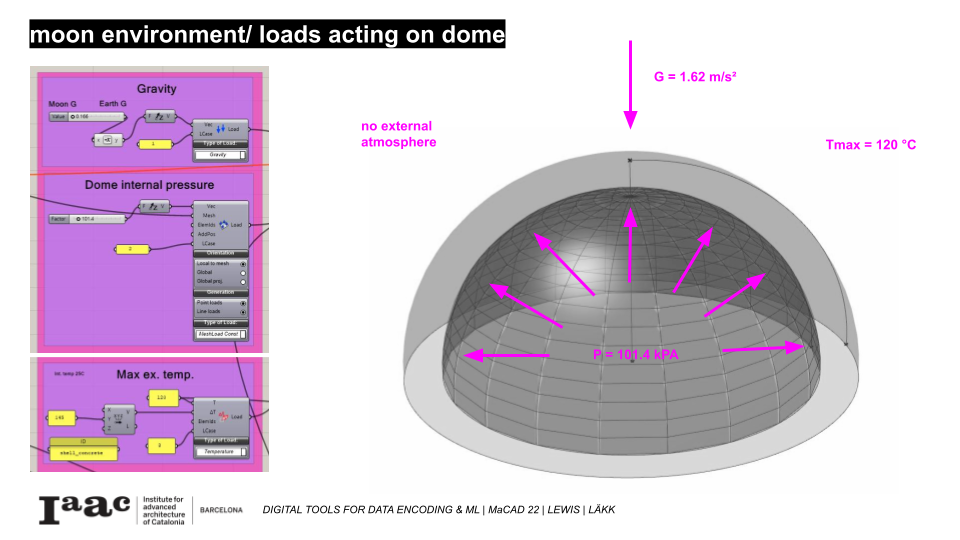
In order to understand the distribution and correlation of our datapoints we ran kmeans clustering a number of times to try to identify the features that could describe the 3 utilization categories of under, over and optimally utilized domes.
From the graphs we see that the lighter domes tend to be underutilized and heavier either optimally or overutilized. We couldn’t see any clear correlation between compressive strength, hence the recipes and utilization value.
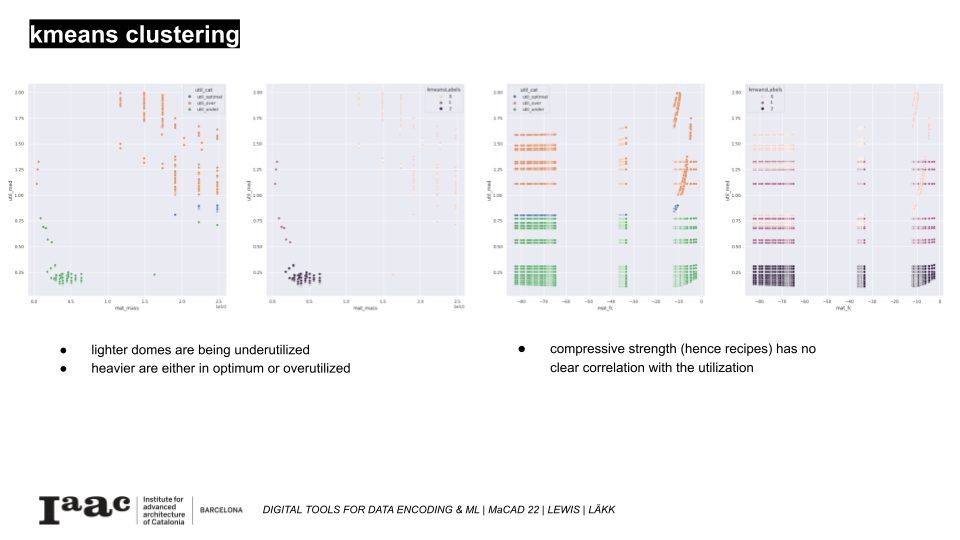
From the next 2 graphs we can see that only the highest and biggest radius domes fall into optimally utilized category,
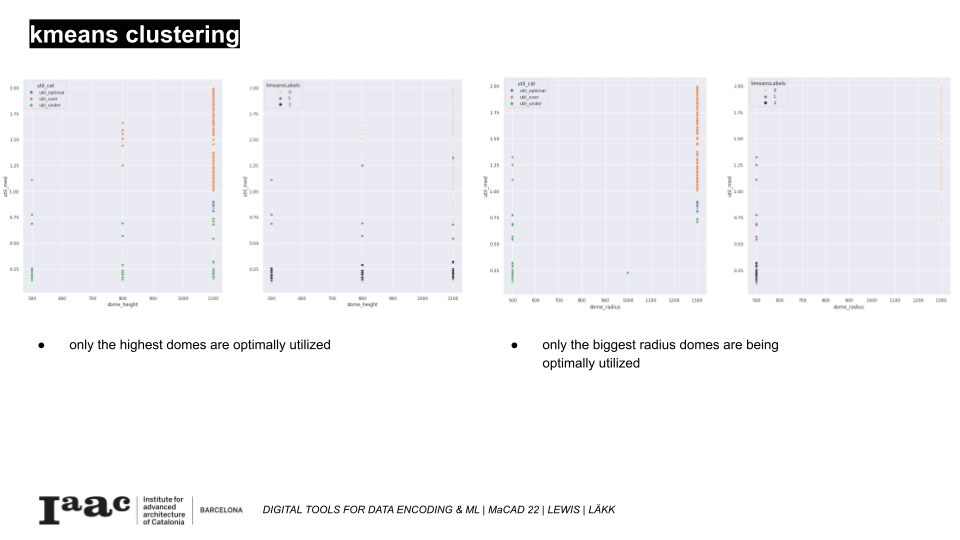
and only the domes with biggest wall thickness at the top, whereas wall thickness at the bottom had no clear correlation.
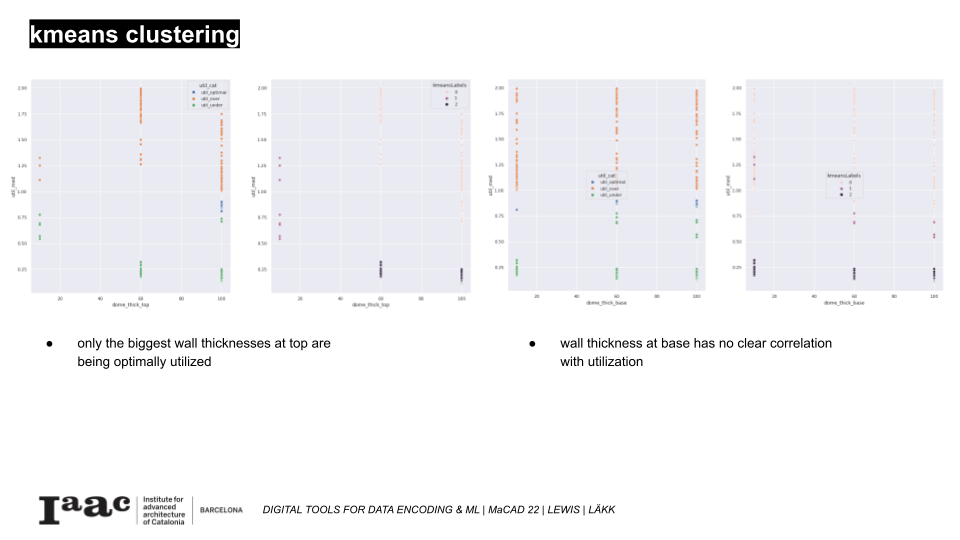
We then wanted to have a closer look at our dataset and visualize 9 random samples from each of the tuilization category.
The underutilized samples seem to have in general smaller geometries and smaller or equal wall thickness at the top compared to bottom. The reason that they are underutilized might might be due to the specific lunar conditions with only 1/6th of gravity, extreme temperature and internal domes’ pressure. However there seems to be not very clear relationship between the compressive strength and utilization.
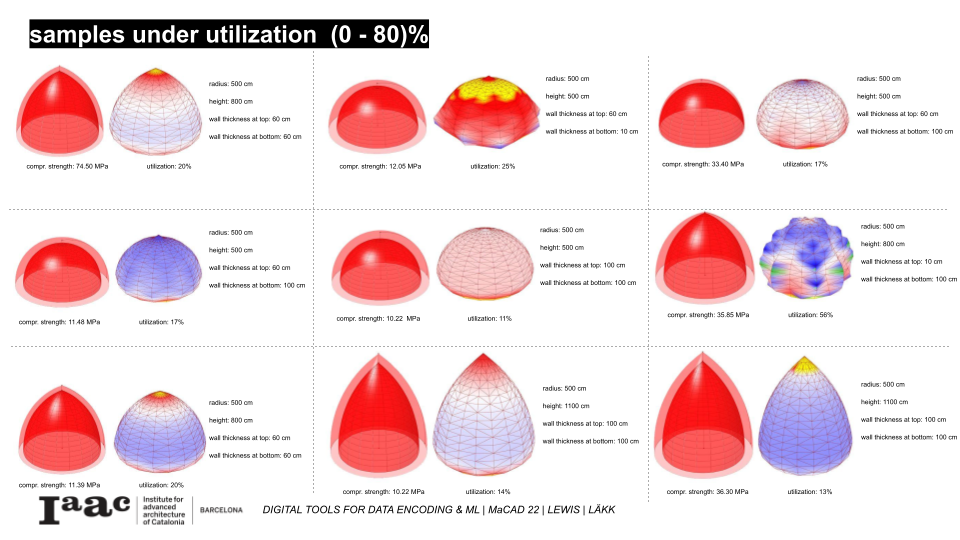
For optimal utilization we see that only the biggest domes are being sampled. This can again be due to specific lunar conditions, very different from Earth. Interestingly we also notice the top wall thickness being thicker than at the bottom.
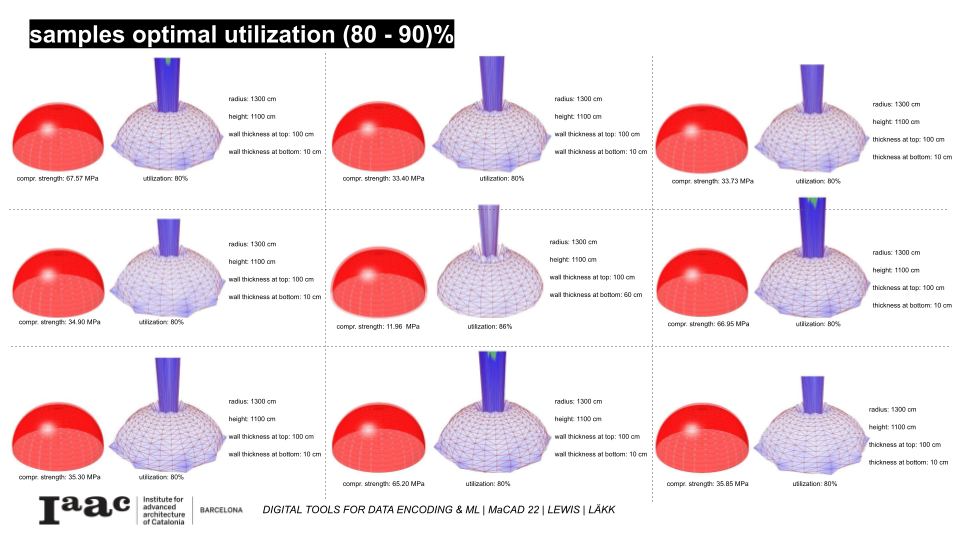
With overutilization samples we see that we have many thin wall geometries in the mix and domes with very low compressive strength, which makes sense that they have landed in this category.
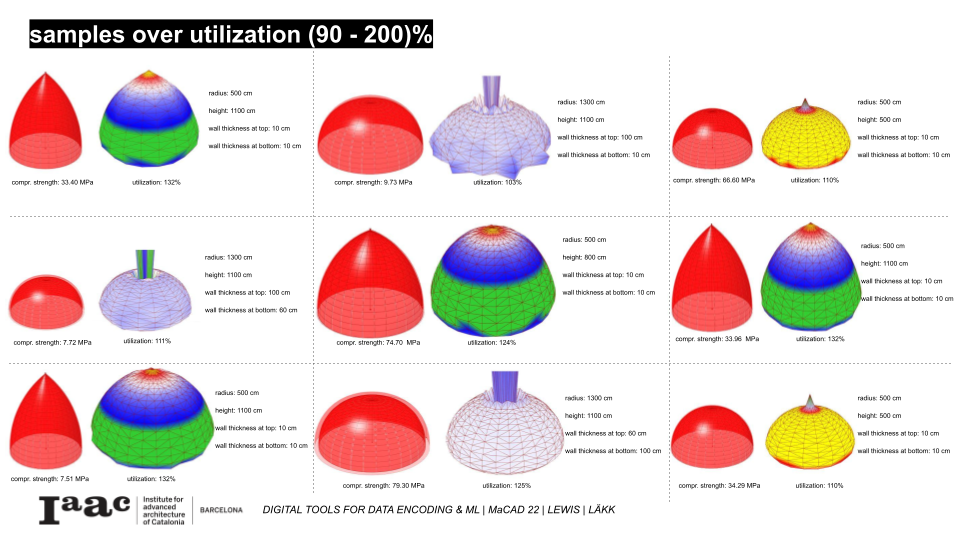
All in all it is somewhat difficult to make any very confident conclusions based on the samples. This is due to our somewhat limited knowledge of structural engineering Karamba 3d software and whether everything was set up correctly, so we couldn’t really validate the results other than by observation.
We arrived at a final deployment technique which utilizes two models.
Model 1 is a shallow, linear regression model which examines concrete mixture ratios to predict the concrete’s compressive strength.
The compressive strength, from model 1 is then fed into model 2, which is also shallow, linear regression model, where the geometric parameters interact with the material parameters to predict the dome’s utilization.
We ran machine learning model against the original data, per the recording on the right
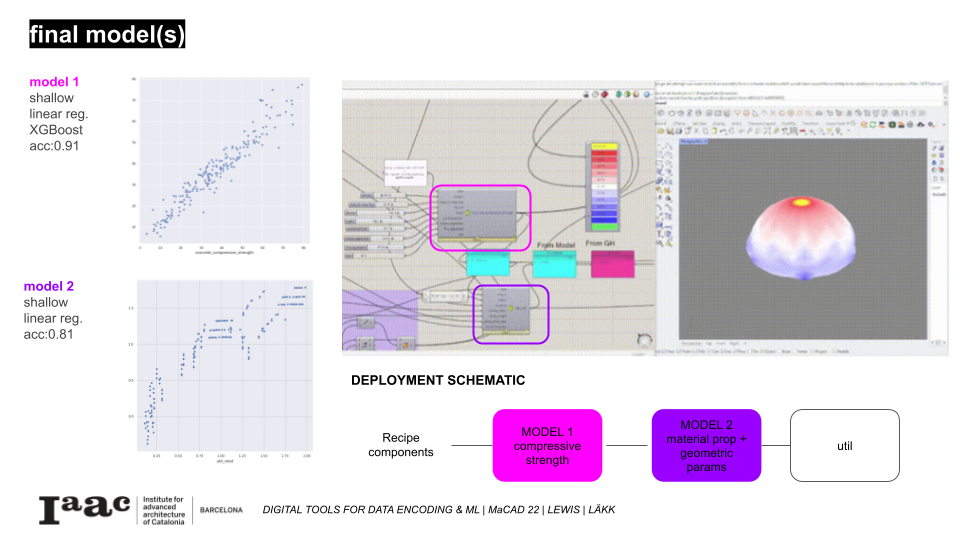
And in plotting the data we can see the model consistently underestimates the utilization values, however follows the original data’s form and trends .
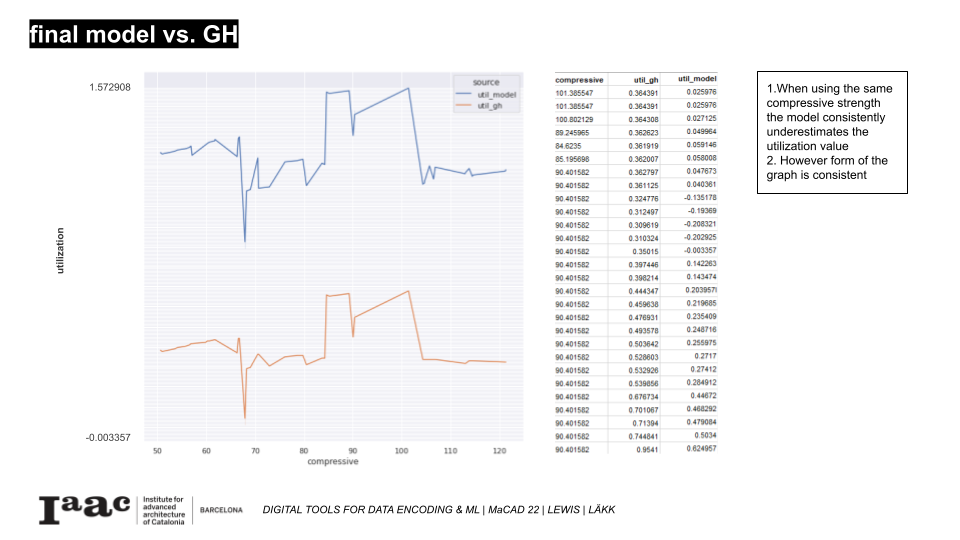
We’ll walk you through the major decisions which lead us to our final model deployment
1.Two deployment models vs. one
We chose a two model deployment technique after a significant amount of experimentation with both methodologies.
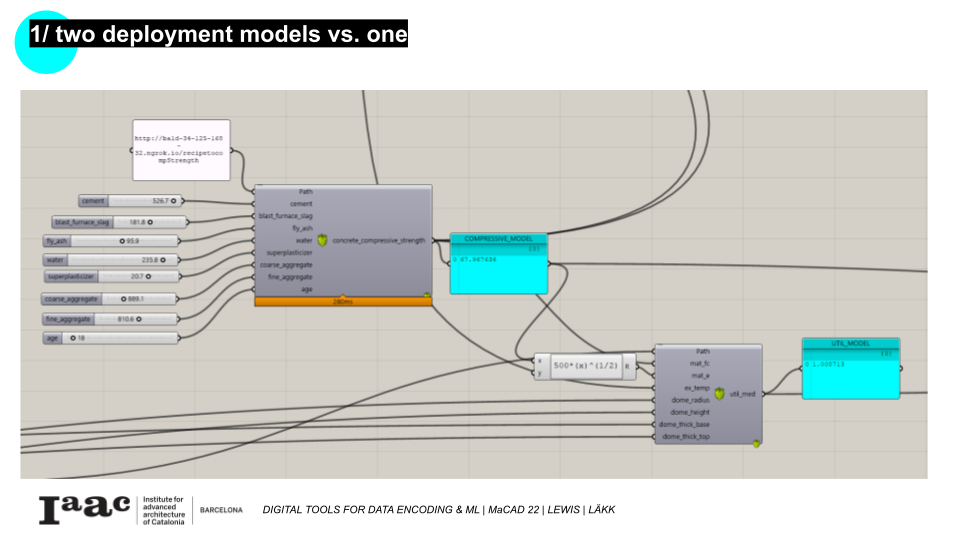
The heat maps where an initial indication of the benefits of dimensionality reduction – relationships are very evident and strong in the separated dataset, while there is a significant amount of noise in the graph on the right
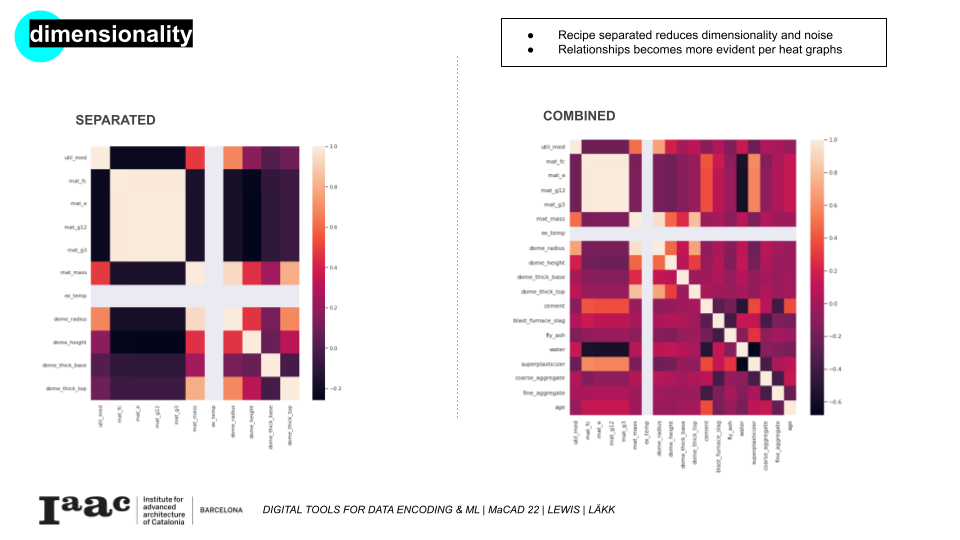
Variance ratio, and level to which the results effect each other is higher in the separated model than in the combined
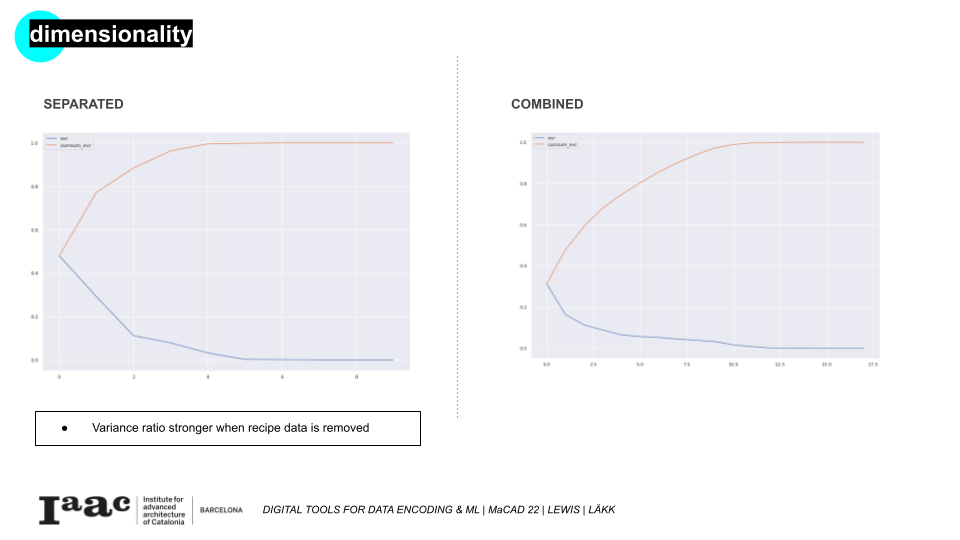
Which is further reinforced in the PCA heat maps
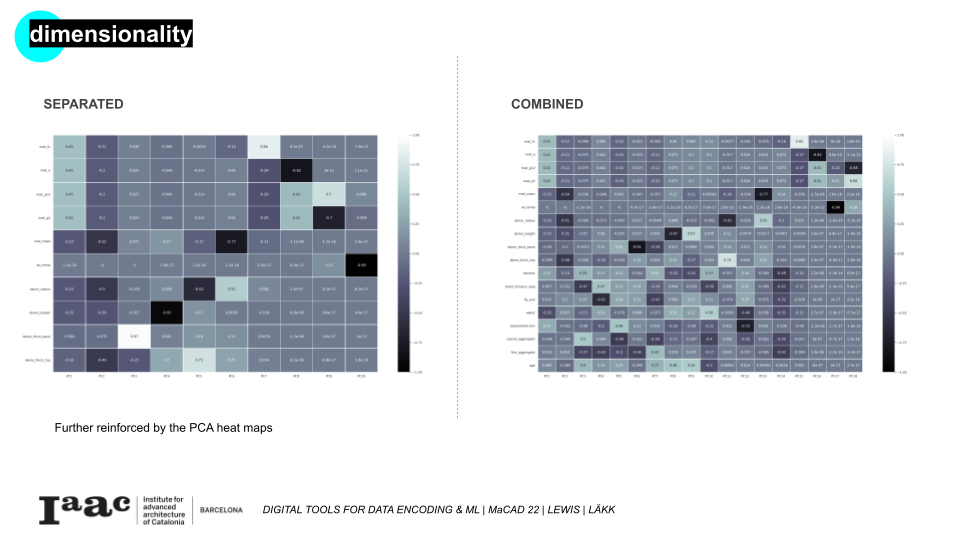
Ultimately recipe model take some weight/work away from the utilization model, the compressive strength is already sorted when it arrives to the geometric features
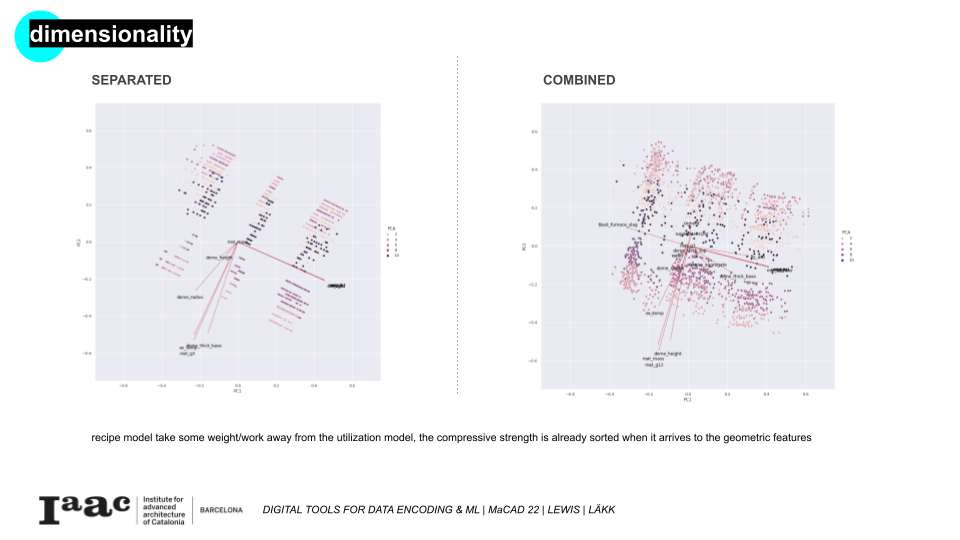
2. Second major decision – shallow vs. deep model
We binned and cleaned the 15,000+ entire to produce more a more even representation of utilization outputs, but through this we were only left with 2933 entries, due to overrepresentation in certain categories.
This number of data points + the reduced dimensionality of the 2 model approach meant we had a less complex data set
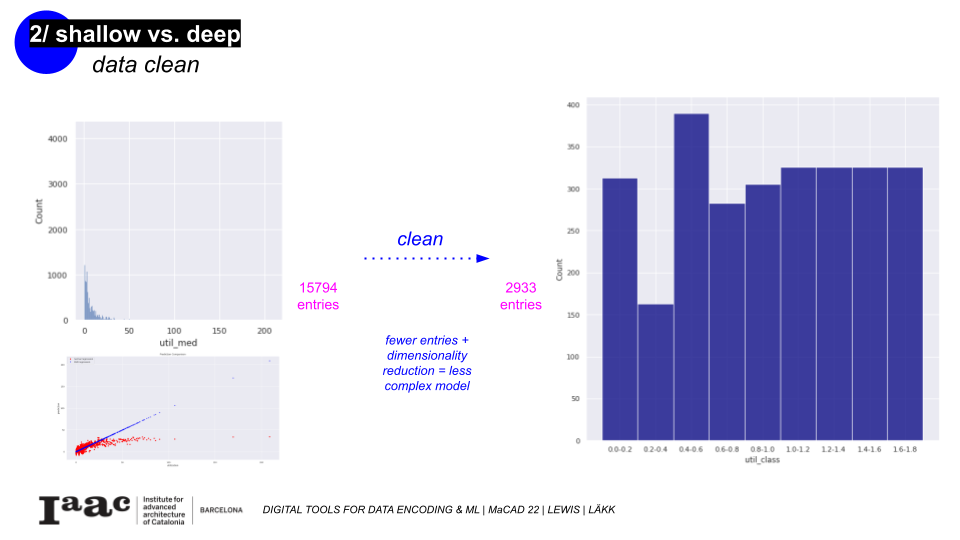
We of course ran deep learning models, but they produced high loss functions, and the XGBoost model produced an over fit model
Therefore the sk.learn regression model, while not within the 85-95% range was the most satisfactory

This project provided us with some major take aways about understanding, and working with datasets. Specifically:
- We Underestimated the complexity of the data set we were dealing with – which resulted in less control over the data than we had hoped
- correlation between variables was not appropriately scaled (geometric params cause massive changes, while recipe changes are very minor)
- Ultimately the model does prove that there is a relationship, however further refinement is needed before a more concrete conclusion is made
Lunar Regolith Construction: finding a correlation between concrete mixtures, geometry and utilization is a project of IAAC, Institute for Advanced Architecture of Catalonia developed at the Masters in Advanced Computation for Architecture and Design in 2022 by Hanna Lak and Zoe Lewis, and Faculty: Gabriella Rossi, Hesham Shawqy